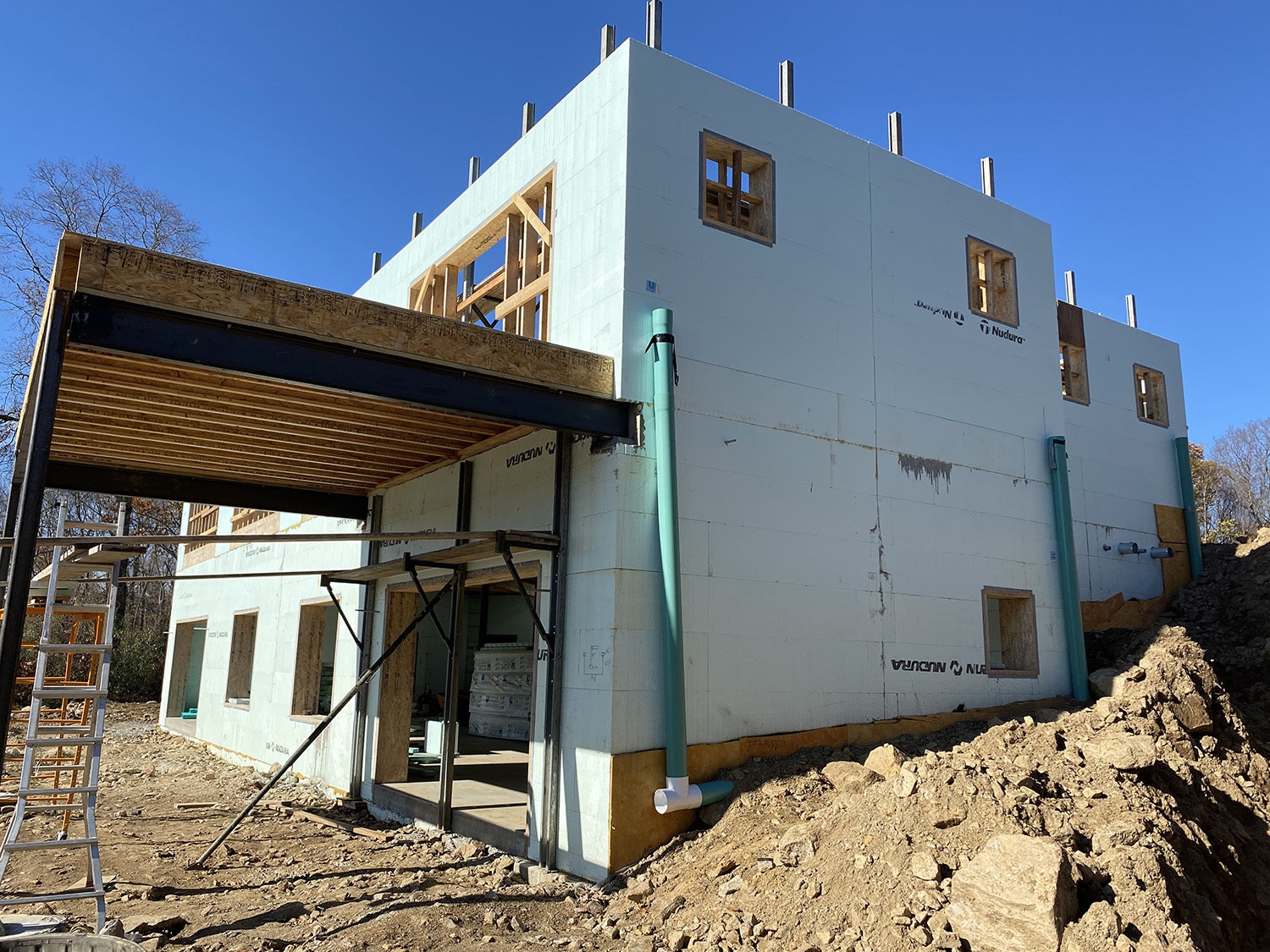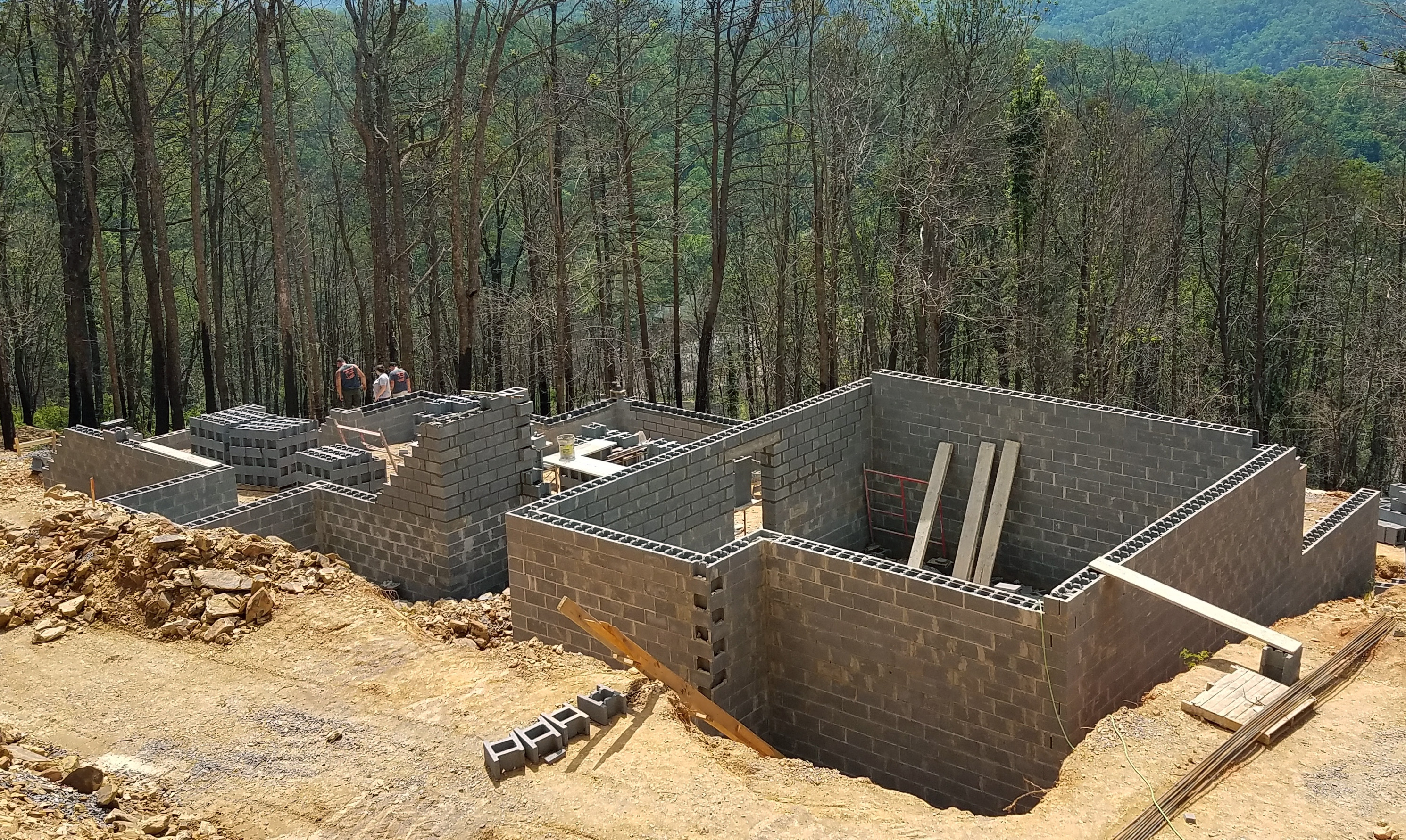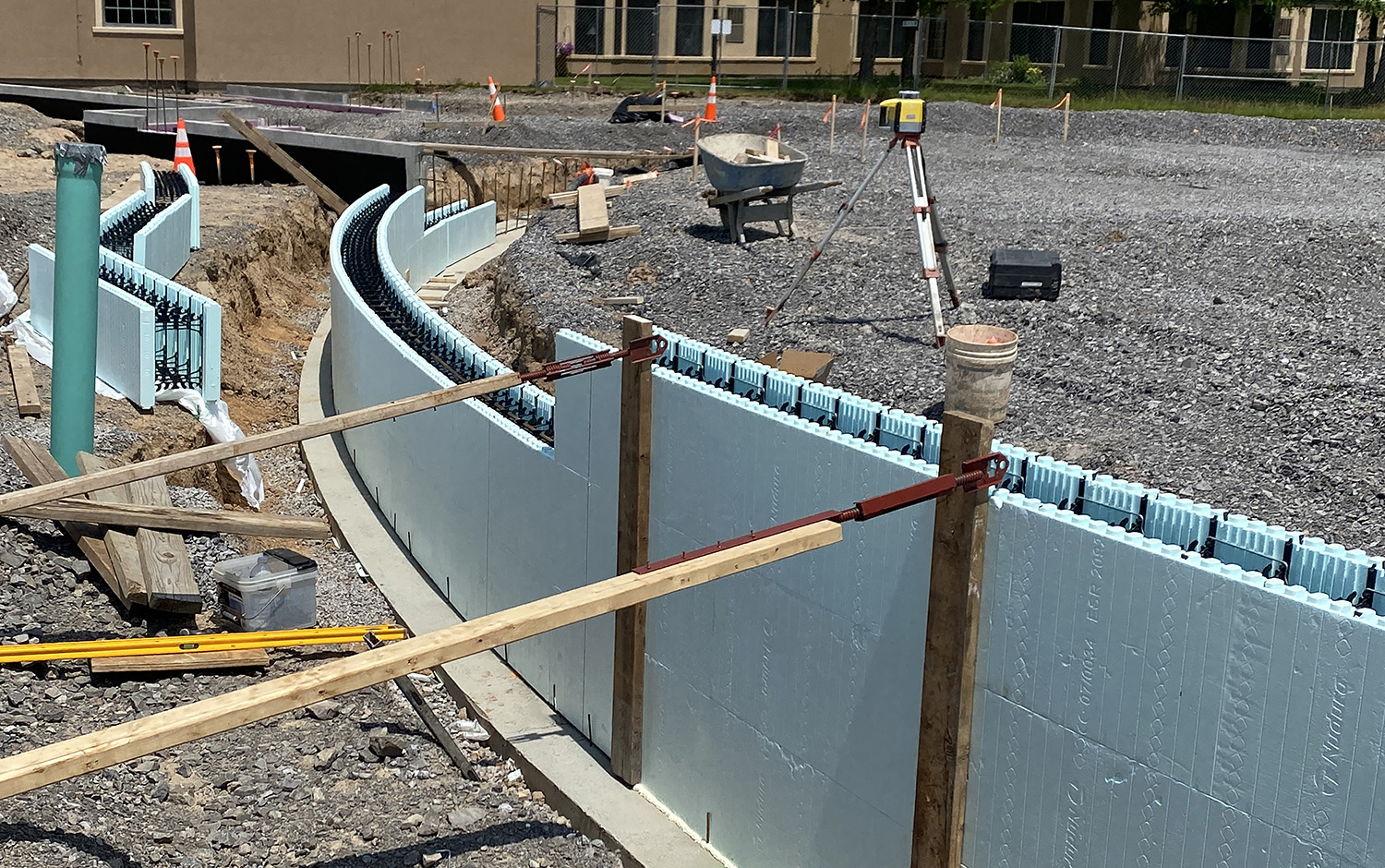
- Products
- Why Nudura
- Nudura Project Applications
- Training Academy
- Resources
- Company
For decades, concrete masonry units (CMUs) – also known as cinder blocks or concrete blocks – have been the most common building material choice for foundation walls for homes and commercial properties. But things are changing. Since insulated concrete form (ICF) construction was introduced in the 1960s, they are increasingly being selected by architects and contractors for building foundations and up the wall to the roof. There are several reasons why ICFs are replacing CMUs on jobsites. Here are the top four.

Durability
When you’re designing or building a home, you want it to last. When it comes to foundations and exterior walls, insulated concrete forms are one of the most durable solutions on the market.
The reinforced concrete core is cushioned by the two continuous layers of expanded polystyrene (EPS) foam insulation on either side. As a result, ICF walls can withstand tornado- and hurricane-force winds up to 250 miles per hour. In testing, it’s been demonstrated that they can withstand the blow of 2x4s fired from a cannon, 50-caliber machine-gun bullets and the blast of 50 pounds of TNT from six-feet away, all with little to no damage.
The weak point in a CMU foundation is the mortar, which if damaged or missing can lead to water infiltration. As a result, homeowners or property managers need to regularly inspect CMU walls for signs of deterioration. CMUs also generally have a hollow core making them lighter for installation. But the relatively thin walls can fail under excessive force.
Energy Efficiency
ICFs are the most energy efficient material for building foundations and exterior walls. With the thermal mass of the concrete sandwiched between two layers of EPS insulation, a standard Nudura ICF wall assembly has an overall insulating value of R-24 with options to increase performance to levels of up to R48. Insulated concrete forms are made to eliminate drafts and regulate internal temperatures so there are no more cold, musty basements.
By comparison, a CMU wall has an R-value of R-4 to R-14, meaning insulation must be added after installation to achieve similar performance.
Ease of Installation
ICF forms are lightweight and weather-resistant, making them easy to store and move around a jobsite. When it’s time for installation, Nudura ICF blocks stack easily and click into place, quickly ready for the concrete pour.
ICF systems also streamlines three tasks required with CMU foundations: installing interior and exterior insulation, an air barrier, and a vapor barrier. Completing a CMU foundation takes twice as long, or more, than a finished ICF wall.
As everyone knows, time is money. With a chronic labor shortage in homebuilding and rising labor costs, ICFs are an increasingly cost-effective solution.
CMUs are typically only used for foundations, with lumber (aka wood framing or stick framing) used for the exterior and interior walls. But ICFs can be used from the foundation to the eaves.
CMUs, by design, also have to follow straight lines. Nudura ICFs, on the other hand, are available in various shapes, sizes and curved pieces for truly customized building plans.
Insulated concrete forms are a more durable, energy-efficient, easy-to-install building material compared to working with CMUs. Plus, they offer much more versatility in building design, so it should come as no surprise that ICFs are poised to dominate the foundation and exterior framing market.
CONTACT US
We’re committed to supporting homeowners and design professionals who are interested in or use our products. We’re always happy to help and provide more information.





